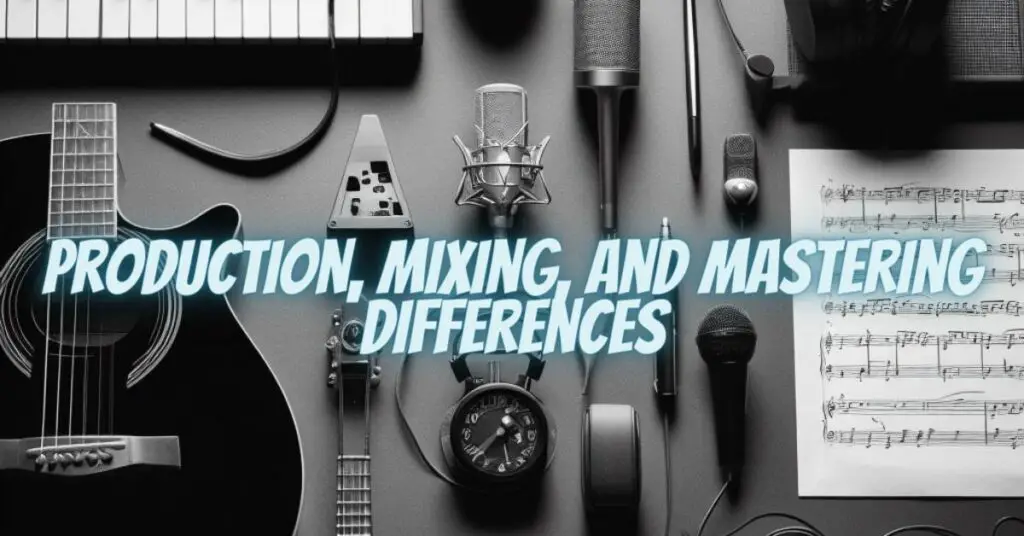Music production is a multifaceted process that involves various stages, each contributing to the creation of a polished and professional-sounding track or album. While “producing,” “mixing,” and “mastering” are common terms in the music industry, their roles and responsibilities can often be a source of confusion. In this article, we will dissect the key differences between producing, mixing, and mastering in music production.
- Producing: The Creative Visionary
- Role: The producer is the creative visionary behind a musical project. They are responsible for guiding the entire process, from the initial concept to the final product.
- Responsibilities:
- Song Arrangement: Producers help arrange and structure the song, deciding on the order of verses, choruses, bridges, and instrumentals.
- Instrument Selection: They choose the right instruments and sounds to achieve the desired mood and style of the song.
- Artist Direction: Producers work closely with artists, providing guidance on vocal delivery, dynamics, and emotional expression.
- Recording Sessions: Producers oversee the recording process, ensuring that performances are captured effectively.
- Mixing: The Sonic Sculptor
- Role: The mixing engineer is responsible for blending and shaping the individual tracks and elements of a song into a cohesive and balanced final mix.
- Responsibilities:
- EQ and Balancing: Mixing engineers use EQ to balance frequencies and create space for each instrument.
- Panning: They position tracks in the stereo field, enhancing the stereo image and providing depth to the mix.
- Effects and Processing: Mixing engineers apply various effects like reverb, delay, and compression to enhance the sound and add character.
- Volume Control: Balancing track volumes is crucial to create a well-leveled mix, where no element overpowers the others.
- Automation: Mixing engineers automate parameters over time, ensuring that the mix evolves dynamically.
- Mastering: The Final Polish
- Role: The mastering engineer is the last step in the production process, focusing on optimizing the final mix for distribution and playback across different platforms.
- Responsibilities:
- Tonal Balance: Mastering engineers use EQ to achieve a balanced frequency spectrum and address any tonal issues.
- Loudness Control: They ensure that the final product meets industry loudness standards and maintains consistent volume.
- Sequence Order: For albums, mastering engineers arrange the tracks in the desired order for a cohesive listening experience.
- Quality Assurance: Mastering includes a final quality check to catch any issues before distribution.
Key Differences
- Artistic vs. Technical: Producing is primarily a creative role, while mixing and mastering are more technically focused, with a goal of refining and optimizing the music.
- Broad vs. Specific: Producers have a broad role overseeing the entire project, whereas mixing engineers focus on blending individual tracks, and mastering engineers focus on the final mix.
- Preparation vs. Final Touch: Mixing takes place after recording but before mastering. Mastering is the last step before distribution.
- Sonic Detail: Mixing engineers work on the details of individual tracks, while mastering engineers work on the overall sound and presentation of the entire mix.
Understanding the distinct roles of producing, mixing, and mastering is essential for anyone involved in music production. Each stage has its unique responsibilities, from shaping the initial creative vision to achieving a polished, professional, and distribution-ready final product. Collaborative teamwork among producers, mixing engineers, and mastering engineers is key to producing exceptional music.

